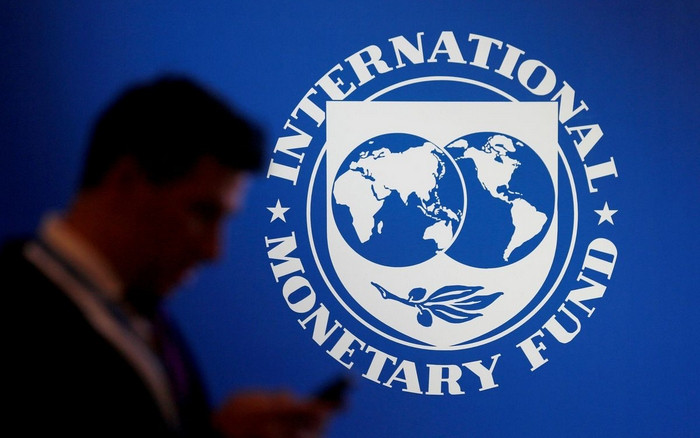Unrest in Eastern Europe has dealt a heavy blow to the global economy, hurting growth and driving up prices. According to the IMF, in addition to creating historic migration flows, the conflict is driving up prices of food and energy, fuelling inflation and eroding income values, while disrupting trade, supply chains and remittances in the neighbouring countries of Ukraine.
The IMF also noted that the conflict could dampen consumer and business confidence while creating uncertainty for investors, which will reduce asset prices, tighten financial conditions and trigger capital outflows from emerging markets.
The countries with direct trade, tourism, and financial exposures would feel mounting pressure, especially in some regions such as Sub-Saharan Africa, Latin America, Central Asia and the Caucasus. Food insecurity was likely to further increase in parts of Africa and the Middle East, where countries like Egypt import 80 percent of their wheat from Russia and Ukraine.
Food and energy prices in Latin America and the Caribbean also climbed, quickening the high inflation rates. According to IMF experts, Latin America and the Caribbean could be significantly affected by the price storm, in the context of the five major economies of Brazil, Mexico, Chile, Colombia and Peru, facing an average 8 percent annual rate.
Inflation rates in Argentina, the third-largest economy of the region, rose to over 52 percent. Experts predicted this situation would force central banks to step up their fight against inflation, which erodes the purchasing power of wages and affects market demand.
However, the impact of the price storm on the Latin American and Caribbean economies has been uneven. Importers in Central America and the Caribbean suffered from higher oil prices, while exporters of crude oil, copper, iron ore, corn, wheat and metals benefited.
However, IMF economists warned that financial conditions remain relatively favourable, the situation will worsen if the conflict is prolonged, leading countries to tighten their policy of domestic currency.
The world's number one economy is also facing unprecedented inflationary pressure in recent decades. The US Federal Reserve (Fed) raised interest rates in its key interest rate range and will step up its inflation fight, with the first in what is likely to be a series of interest rate hikes this year.
The hike comes exactly two years after the Fed slashed rates to near-zero levels and began buying billions of dollars in Treasury bonds and mortgage-backed securities each month, to stimulate the economy through the recession caused by the COVID-19 pandemic.
However, due to the impact of other external factors and high inflation being limited to a few sectors hit hard by specific supply shortages in early 2021, the prices of food, energy housing and a range of services, have grown at a faster rate in recent months.
The Fed Chairman has called high inflation the biggest threat to an otherwise strong economy and acknowledged members of Congress that the bank had misjudged how long it would last. The annual inflation, which is measured by the personal consumption expenditures price index, hit 6.1 percent in January, three times higher than Fed’s annual average rate.
Rising inflation has continued to affect EU members; however, the bloc’s economy will not fall into recession due to the tense situation in Ukraine. The European Central Bank (ECB) forecasted that eurozone growth will be 0.5 percentage points lower this year than previously expected because of the crisis in Ukraine, but still come in at 3.7 percent, and at 2.8 percent in 2023. The ECB also forecast the inflation to average 5.1 percent in 2022, well above the bank’s target of 2.0 percent.
However, Credit Suisse economists slashed their forecast for European growth, expecting the region to expand just 1 percent this year, amid the rapid increase of commodities prices and disruption of supply chains. Credit Suisse also forecasted Russia's GDP could be much lower than its previous estimate of 2-2.5 percent. However, the US economy is projected to be more stable, with economic growth likely to shrink by only 50-100 basis points, remaining at around 3 percent. Citigroup analysts also said that Russia’s special military operation in Ukraine, will decelerate global growth as oil and commodity prices soar.
In the long term, the conflict in Ukraine could fundamentally change the global economic and geopolitical order if energy trade changes, supply chains are restructured and payment networks are divided. The IMF also said we could see disruptions in natural gas imports and wider supply-chain disruptions. In particular, Eastern Europe would face higher financing costs as the region has absorbed most of the 3 million people who have fled Ukraine.
The countries in Central Asia and the Caucasus, with close trade and payment systems links to Russia, would be greater affected by the impact of sanctions on Moscow, curbing trade, remittances, investment and tourism. In Asia, the biggest impact will be felt among oil importers; however, some nations such as Japan and the Republic of Korea can ease the impacts thanks to new oil subsidy policies.
Although many countries have taken measures to cool down the price fever, the tense geopolitical developments have negatively affected the markets. Faced with unpredictable risks, the IMF expects to reduce its estimate for economic growth in 2022 from its earlier prediction of 4.4 percent.















